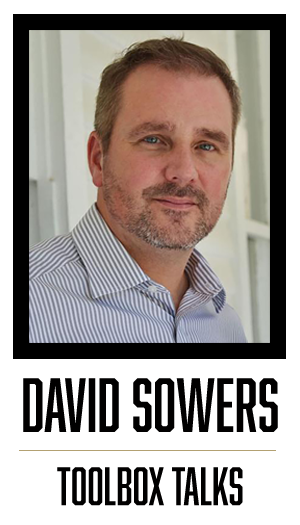It should go without saying that positive reinforcement is the best way to improve worker performance. Study after study has scientifically validated what we already know in our gut: People like feeling good and will seek out more of that good feeling.
 It’s not hard to connect the dots between high performance and positive reinforcement. I do something well, that something gets me rewarded, I like rewards, I’ll do more of that thing. I think we can all agree that positive reinforcement is valuable.
It’s not hard to connect the dots between high performance and positive reinforcement. I do something well, that something gets me rewarded, I like rewards, I’ll do more of that thing. I think we can all agree that positive reinforcement is valuable.
There is a lot to say about positive reinforcement and this space is limited. However, I want to bring up one point before we get to the tips. I can’t tell you how many times I have heard “They get their positive reinforcement every two weeks when their paycheck hits the bank.” Yes, that is an important reward for a job well done, but here’s the problem with thinking it’s all you need.
If your best employee is being positively reinforced on payday, guess who else is getting positively reinforced that day? Your worst employee. It won’t take long before others figure out the minimum effort needed to get the same reward as the worst person on your team. Do you really want a team full of people doing just enough to not get fired? Probably not, so here are some tips to giving positive reinforcement:
Be specific: There are two things to consider here. First, what specific behavior are you talking about? There are a lot of things that happened throughout the day; some good and some that would make you cringe. If you end the day with “good job,” then you are telling your team that you were good with all of it. Be specific to the behaviors you want to see more: Good job replacing that frayed extension cord. Good job following the procedure step by step. Good job inspecting your vehicle before operating it.
The second way to be specific is to address specific people. If you end the day with “good job team” then everyone receives the same collective praise despite their differing effort or performance. Be specific in who you are addressing. Good job, Steve, on using all the right PPE. Good job, Haley, on replacing worn-out tools.
Be immediate: The longer you wait to give positive reinforcement, the less impact it will have. If you can do it without being a distraction, give the positive reinforcement while still in the moment. If the person is still in the work environment when praise is given, they will remember and seek out that good feeling the next time they are there. For example, if I’m standing next to the electrical panel I just did some wiring in and my supervisor tells me the specific aspects of the job he/she appreciates, the next time I go to work a panel I am much more inclined to remember what he/she acknowledged. If the feedback is “remember yesterday when you wired that panel? Good job,” then it won’t be as memorable or impactful.
Be consistent: Positive reinforcement is not a one-time (or every payday) thing. It’s an important part of a continuous process for improvement. Ideally, you should be achieving a 4:1 ratio of positive reinforcement to corrective coaching. In other words, you should be thanking your people for the things they are doing right four times as often as you are coaching them on what they did wrong. Odds are you are nowhere near a 4:1 ratio, so there is plenty of room to add positive reinforcement before it starts to feel insincere.
The more you give positive reinforcement, the easier it is to ask for a new or different behavior. On a final, completely unrelated, note, I would just like to say: 1) Good job, reader, on seeking out ways to improve the workplace. 2) You did a great job, web surfer, reading this; how many words per minute was that? 3) Good job reading quietly, person in cubicle. You didn’t distract others by mumbling under your breath at all. 4) I noticed you put in headphones, dude with headphones on. That’s a good tip for minimizing distractions and focusing that others could use. Now if you could just help me out by forwarding this article to others.
Toolbox Talks offers quick insights and thoughts to use for your toolbox (tailboard) talks. Dave Sowers is a founding member of Knowledge Vine, a veteran-owned human performance training and consulting organization that strives to reduce the frequency and severity of human errors in the workplace. He has almost 30 years of experience in power generation and the utility industry. He is a veteran of U.S. Navy Nuclear Power Program and holds a bachelor’s degree in resources management and a master’s degree in both management and emergency management and homeland security.



